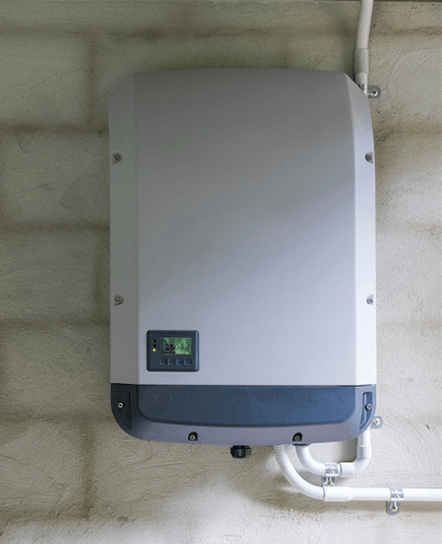Solar inverters are a vital component of any solar energy system. They convert the DC power generated by solar panels into the AC power we use in our homes. While inverters are durable, long-lasting and require little maintenance, they may sometimes need to be reset.
In this article, we’ll discuss how to reset your solar inverter and why it’s important. Whether you’re a homeowner or consumer, this article will help you troubleshoot your solar inverter with step-by-step instructions.
On this page, you’ll find:
Advertisement
Resetting your solar inverter: What to do
First, let’s talk about what a solar inverter is and why it’s so important to the function of your solar system. Simply put, a solar inverter is responsible for the conversion of the DC power produced by your solar panels into AC power that can be used in your home. In other words, it’s the ‘brain’ of your solar system.
Below is a general guide on how to reset your solar inverter. Please refer to the solar inverter’s manufacturer or a licenced solar installer for more details.
- Step 1: Turn off the inverter
Turn off your solar inverter by simply flipping the switch of the inverter, which is usually located in a compact box on the exterior wall of your premises. - Step 2: Switch off the AC disconnect
This switch is normally located on the side or front of your inverter. - Step 3: Turn off the DC disconnect
This can be found in the grey box between your solar panels and inverter. By turning it off, you’ll stop the flow of DC power from the solar panels to the inverter. Please note that switching this off may cause a loud cracking sound. - Step 4: Shut down the electrical service panel
Find your primary electrical panel and look for the breakers specifically assigned to your solar system. It will usually be marked as ‘Solar PV’, ‘Photovoltaic’, or something similar. Once you’ve identified the breakers, flip them to the ‘Off’ position. - Step 5: Wait a few minutes
With your solar system completely shut off, give it a minute or two before proceeding. - Step 6: Turn the electrical service panel back on
Flip the breakers to the ‘On’ position as outlined in Step 4. - Step 7: Turn on the DC disconnect
Switch the solar disconnect box back on as mentioned in Step 3. Again, there may be a loud cracking sound. - Step 8: Switch on the AC disconnect
Turn the AC disconnect switch back on as highlighted in Step 2. - Step 9: Turn on the inverter
To complete the process, simply switch the solar inverter back on. Keep in mind that it might take a while to fully reset, so sit tight and allow it to do its thing.
Five common solar inverter issues

Unfortunately, like any other technology, solar inverters can have issues that impact their performance. Here are some common problems with solar inverters and how to resolve them:
- Not turning on: One of the most common issues with solar inverters is when they fail to turn on, usually because they’re not receiving power. Ensure the inverter is properly connected to the power source and there are no tripped breakers or blown fuses. If your inverter still fails to turn on, it might be an issue with the internal components of the inverter, and you should contact a professional for assistance.
- Alarm going off: If your inverter suddenly starts beeping, it is an indication that something is wrong with your solar energy system. In most cases, the alarm goes off when there is an issue with the solar panel installation, such as a faulty circuit or excess voltage. Be sure to check your inverter manual or consult with your installer to identify the specific issue.
- No battery power: If you use a battery backup system, you might experience an issue where the inverter isn’t providing power to your home despite the battery being fully charged. This issue is often caused by a failed sensor or a faulty connection between the inverter and the battery. To resolve this issue, you should call your inverter manufacturer or a professional technician to diagnose and repair the fault.
- Constantly noisy: Inverters generate some noise when producing electricity, but if yours is unusually loud, it may be a sign of trouble. A faulty cooling fan within the inverter may cause the noise.. In case of a noisy inverter, call a professional technician who can investigate the issue, identify the cause and fix it.
- No backup: One of the benefits of solar power is that it provides a backup energy source. However, if your solar inverter is not functioning correctly, you may not have access to this backup power when you need it most. If you’re experiencing this issue, it’s important to get in touch with your installer immediately.
Compare solar plans
Here are some of the cheapest solar-specific deals from the retailers on our database. These costs are based on the Ausgrid network in Sydney but prices will vary depending on your circumstances. We show one product per retailer, listed in order of lowest price first. Annual price estimates assume general energy usage of 3900kWh/year for a residential customer on a single rate tariff. Price estimates exclude solar feed-in tariff credits. These are products from referral partners†. Our database may not cover all deals in your area, and please check retailer websites for up to date information.
Here are some of the cheapest solar-specific deals from the retailers on our database. These costs are based on the Citipower network in Melbourne but prices will vary depending on your circumstances. We show one product per retailer, listed in order of lowest price first. Annual price estimates assume general energy usage of 4000kWh/year for a residential customer on a single rate tariff. Price estimates exclude solar feed-in tariff credits. These are products from referral partners†. Our database may not cover all deals in your area, and please check retailer websites for up to date information.
Here are some of the cheapest solar-specific deals from the retailers on our database. These costs are based on the Energex network in Brisbane but prices will vary depending on your circumstances. We show one product per retailer, listed in order of lowest price first. Annual price estimates assume general energy usage of 4600kWh/year for a residential customer on a single rate tariff. Price estimates exclude solar feed-in tariff credits. These are products from referral partners†. Our database may not cover all deals in your area, and please check retailer websites for up to date information.
Here are some of the cheapest solar-specific deals from the retailers on our database. These costs are based on SA Power network in Adelaide but prices will vary depending on your circumstances. We show one product per retailer, listed in order of lowest price first. Annual price estimates assume general energy usage of 4000kWh/year for a residential customer on a single rate tariff. Price estimates exclude solar feed-in tariff credits. These are products from referral partners†. Our database may not cover all deals in your area, and please check retailer websites for up to date information.
You may be interested in:
The final word on solar inverters
Solar inverters are essential components of a well-maintained home solar power system. While they’re generally reliable, they can run into issues from time to time. Be sure to keep an eye out, and always call a professional to address any persistent issues with your inverter to maintain the longevity and efficiency of your solar power system. With proper maintenance, solar inverters can last for years, providing clean, efficient energy to your home.




Share this article